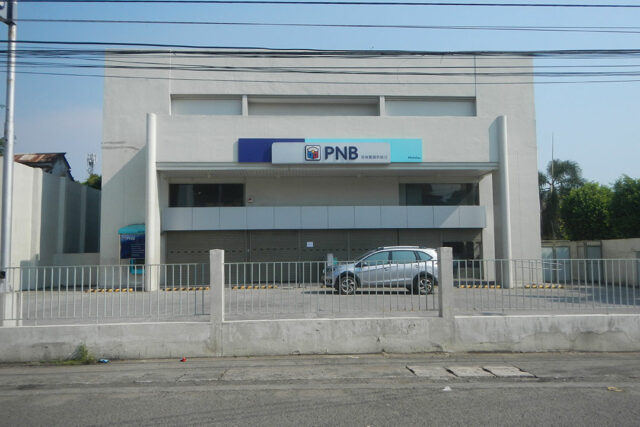Focus on growth amid uncertainty and disruption
We all know the issues of the day: persistent inflation that affects customer spending, new technologies that disrupt how business gets done and how customers interact with brands, new products and services from new competitors, and a changing country demographic that challenges how we hire and retain talent. Companies can take many strategies and actions to succeed in this environment. However, growth-focused busi-nesses are best positioned to be resilient and thrive today.
For all businesses, creativity and innovation are the necessary ingredients for growth. Growth is what attracts, keeps, and engages executives and talent. Growth conveys a winning culture to the organization. Growth allows a company to set the pace, keeping competitors at bay. Most importantly, growth is an endorsement from customers that a company’s products and services remain relevant.
The consequences of neglecting growth are dire. A company that fails to prioritize growth risks a decline in revenue or income, which can lead to negative sentiment among customers, suppliers, and other stakeholders. This is a risk that no business can afford to take lightly.
But how and where do we find growth? This is not a question to be taken lightly. A company must carefully consider and choose one or more of several strategic approaches to generating growth, each requiring thoughtful planning and execution.
One approach is to re-align the business portfolio through an acquisition and divestment program. This can involve acquiring businesses in similar or complementary markets or even partaking in vertical integration. And over time, some businesses might perform better under new owners. Such divestments can inject capital for new growth opportunities.
The second approach is to find new revenue growth from existing “core” businesses. Rebuilding the core business is often necessary to deal with disruptions caused by technology, changes in customer behavior, or new en-trants. Are there markets and customers we need to serve better with our products and services? Are there ways to extend our products to different customer segments?
The third approach is entering related or complementary markets, sometimes called “adjacent” businesses. What capabilities does the company have that would be relevant or be a competitive edge when used differently? Amazon realized its e-commerce IT infrastructure could be used by other companies looking to cut costs and quickly respond to market changes. Globe Telecom leveraged its mobile customer relationships and sales channels to enter financial services with GCash.
The last approach is finding completely new business opportunities through innovation and investment. While this is often associated with start-ups and venture capital, many companies and even conglomerates in the Phil-ippines are experimenting with new ways to serve unmet customer needs. In this approach, a company looks at its resources and capabilities to build new revenue streams. Telcos, for example, are leveraging their capabilities to create healthcare ventures. Another example is that poor financial inclusion, married with mobile technology and apps, led to the creation of digital banks.
Few took notice that many years ago, the United Nations declared April 21 as the “World Creativity and Innovation Day” to acknowledge that “innovation is essential for harnessing the economic potential of each nation and the importance of supporting mass entrepreneurship, creativity and innovation which create new momentum for economic growth and job creation and expand opportunities for all, including women and youth.”
All these approaches — rebalancing a business portfolio, turbo-charging existing revenue streams, fostering creativity, and harnessing innovation and growth — take time and effort. A company and its Board must bravely allocate the necessary talent, time, and resources. They should take bold actions, especially in these times of uncertainty when it is far too easy to just be defensive.
In my past first-hand experiences with all four approaches to finding growth or finding new revenue opportunities, I can share the following seven key lessons:
1. Communicate the company’s “burning platform.” This will focus everyone’s attention, from shareholders to boards to leaders to employees, and enable the hard work required.
2. Truly understand the customer beyond demographic or psychographic profiles. In the words of the late Clayton Christensen, who extensively researched disruption: “A ‘job to be done’ is a problem or opportunity that somebody is trying to solve. We call it a ‘job’ because it needs to be done, and we hire people or products to get jobs done.”
3. Adapt the growth strategies, innovation structure, and process to the company’s situation. Is the core business or revenue stream under competitive attack? Are there new competitors, and what are they after? Is the core business subject to disruption because of the macro environment, customer changes, or technology adoption? Is the company in a race to get the first customers or users?
4. Create a disciplined stage-gate process, with milestone-based funding of new initiatives and regular progress monitoring. Innovation is not just about brainstorming and doing the sexy new initiatives, but rather the consistent tests, discarding ideas, and funding the following stages until fruition.
5. Facts win — and in the absence of facts, test. The loudest voices or senior people often dictate what a company must do next. We usually forget that if we are in a business-to-consumer (B2C) business, “we are not the customer.” In business-to-business (B2B), product discovery and selection involve many people, making it harder to discern buying behavior.
6. Accept that there is no silver bullet; innovation often takes years. Even M&A’s ability to generate new revenues does not produce instant results, and we cannot take the hard work of integrating and retaining key talent for granted.
7. Finally, setting the tone from the top with an engaged leadership team is crucial. By involving as many people as possible in the company’s “burning platform” and the various initiatives being explored or implemented, we can ensure that everyone feels valued and integral to the company’s operations.
Over the past decade, we have witnessed how technology, changing demographics, and continued investment have transformed how we lead our lives and interact with each other, leading to continued economic growth.
Look closely: all four approaches to finding growth have fueled them. Let’s not forget Christensen’s words: “If you frame your business in terms of products you’re trying to sell, life comes and goes, and you get supplanted by other products and technologies,” he says. “But if you deliver something that does the job well, it will open up opportunities to use new technologies as they emerge. What your business is about is doing the job better and better.”
Let us all be brave in seeing growth and creating the positive impact our products and services can have on our fellow Filipinos.
(This article reflects the personal opinion of the author and does not reflect the official stand of the Management Association of the Philippines or MAP.)
Gil B. Genio is a member of the MAP and a retired Ayala and Globe executive. His last role was Globe’s Chief Strategy Officer (2010-2021) as well as Chief Technology and Information Officer (2015-2021). He is currently an Independent Director at publicly listed companies GT Capital Holdings and Puregold Price Club. He is a Fellow of the Institute of Corporate Directors.













